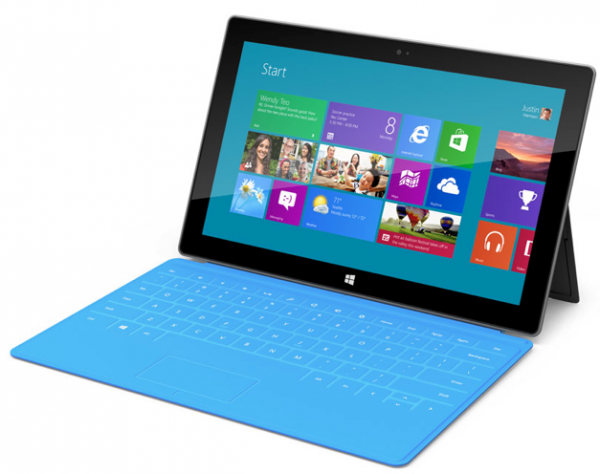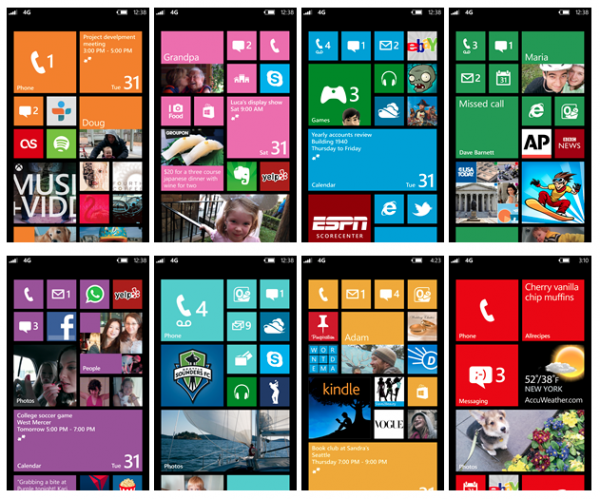Where Will Surface And Windows Phone 8 Be A Year From Now?
- Fahad H

- Jun 21, 2012
- 6 min read
There were two big announcements this week coming out of Microsoft: the
Surface tablet PC and the new mobile OS, Windows Phone 8, which will be closely aligned with the desktop version of 8. At the same time the company announced that it had reached 100,000 mobile apps for the Windows Phone.
What now comes into clearer focus is Microsoft’s larger integrated PC-mobile push. This is Microsoft’s “one-two punch” and effort — last ditch according to some — to slow the iPad and deterioration of the PC market and re-insert itself into the consumer conversation.
Is This “Desperation” or a Bold New Vision?
Let’s examine what was announced and consider the potential impact of these products on the market. Pundits, observers and prognosticators appear generally divided into two camps. One holds that “Microsoft is desperate” and these efforts are likely to falter. The other argues that these are bold, exciting moves and will revive the Microsoft franchise.
I’m somewhere in the middle of these opposing views. Yet I’m also skeptical that these new products will radically transform Microsoft’s place in the market, as some are predicting. Most likely Microsoft’s Surface will negatively impact other PC sales and the Windows Phone 8 will have a modestly positive impact on handset sales.

Back to the Surface
Danny covered the Surface launch event in Los Angeles on Monday. Many people have seen the specs and read considerable coverage about the new tablet PC (two models) and would-be “iPad killer” already.
One tech blogger hyperbolically said Surface “made the MacBook Air and iPad look obsolete.” If so it also makes other PCs, including the new Ultrabooks, look less sexy by comparison. Indeed, it could turn the Ultrabook into the market’s new netbook. Moreover, Surface reportedly took most if not all Microsoft’s hardware partners by surprise, according to Reuters.
There has been considerable speculation about what precisely Microsoft is trying to accomplish with Surface. Some have argued it’s really not Microsoft’s intention to manufacture millions of tablet computers. Rather, the company is simply frustrated with its partners’ lack of imagination and had to take matters into its own hands. This line of argument holds that Redmond is merely trying to point the way for its hardware partners and not trying to undermine them.
However others have made the case, perhaps most persuasively John Gruber, that Microsoft is dead serious and that making devices, in the Apple model of hardware-software integration, is the only way for the company to sustain profitability:
Microsoft Surface is not fundamentally about Microsoft needing to control the entire integrated product in order to compete with the iPad on design. It’s about Microsoft needing to sell the whole thing to sustain its current profitability.Surface is a bold move, and classic Microsoft. If the OEMs don’t like it — and they do not — what are they going to do? Turn to Linux (which no one wants) or Android (which no one wants on anything other than phones)? It’s the OEMs whom Microsoft thinks Surface can put into checkmate, not Apple.
Gruber also makes the point that Microsoft’s hardware partners (at least on the PC side) have nowhere else to turn and so they’ll stick with the company; this was a shrewd maneuver on Microsoft’s part. “Classic Microsoft,” he calls it.
In mobile of course it’s a different story, with Android now the dominant smartphone OS in the world. Windows Phone, though well reviewed, has been anything but a hit. Microsoft has continued to lose market share since the introduction of the flagship Windows Phone the Nokia Lumia. And Nokia, Microsoft’s favorite horse in the race, is in rapid market decline rivaled only by BlackBerry.
But What about the Price?
Pricing and availability for Surface were vague. Pricing is especially important and will largely determine the fate of the product among consumers at least. Microsoft said that Surface devices would be competitively priced. In the case of Surface for Windows 8 Pro, the company said it would be priced “on par with Ultrabook-class PCs.” Right now Ultrabooks run from about $700 to $1,000.
The lower-end Surface RT machine will have to meet or beat iPad pricing if it hopes to slow its momentum. That would mean Microsoft would need to sell it for either $399 or $499. It’s far from clear that Microsoft can make any profit on the machine at that price point. When we learn the pricing later this year we’ll also discover the potential margins.
Next week at Google I/O, the company’s developer conference, we’re likely to see a Google-branded tablet that will undoubtedly be priced very aggressively to compete with Kindle Fire. The twin presence of an inexpensive Google tablet and the iPad may crowd out Surface in the consumer market — though not in the enterprise. We may see a situation where Surface turns out to be not enough PC for the price but also not cheap enough to substitute for a true tablet.

Windows 8: Mostly Playing Catch-Up
Yesterday’s Windows 8 announcement was mostly for the benefit of mobile developers and not the broader consumer marketplace. Most of the announcements were therefore of a technical nature but there were a few consumer-related items. Here’s the list of what was shown off at yesterday’s event:
Multi-core processor support
Bigger, sharper screens
More flexible storage
NFC wireless sharing
Internet Explorer 10
Wallet
Better maps and directions
Cooler apps and games
One of the two big consumer announcements was a mobile wallet, which the company called the “most complete mobile wallet” available. It’s designed to rival Google Wallet and Apple’s quasi-wallet Passbook, just announced. It’s NFC based, like Google’s, but it’s unlikely to drive many hardware sales in the US since most Americans are murky about mobile payments or the need for mobile wallets right now.
Bye Bye Bing Maps for Mobile
The other major consumer announcement involved mapping. Microsoft has apparently gotten rid of the Bing brand in mobile maps and will be using Nokia-branded maps and directions exclusively. Nokia is increasingly the maps back-end online at Bing Maps as well.
In Windows Phone 8 there will also be offline mapping support, which Nokia has had for some time and Google also recently announced, as well as turn-by-turn directions. The new iOS 6 from Apple also has turn-by-turn directions though no “offline” support.
While Nokia Maps on Windows Phones is cool and useful it’s not significantly differentiated from what Google has and what Apple is bringing to market before Windows Phone 8 becomes available.
As part of the close relationship Nokia and Microsoft forged, Redmond agreed agreed to turn over certain mapping functions to Nokia. In my mind the absence of the Bing Maps brand on Windows 8 phones weakens Bing Maps online. One person suggested to me this morning on Twitter that Microsoft might ultimately buy Navteq from Nokia.
Perhaps. Another scenario that may be growing more likely by the quarter is that Microsoft buys Nokia itself if the company continues to lose share and market value.
Will the “Shared Core” Lift Surface and Windows Phones?
I’m not a developer and don’t have much technical or “back end” insight into the Windows Phone 8 announcements. But it appears that Microsoft is offering developers a unified platform so that they can write apps for mobile and PC distribution with little or no modification needed for screen size or resolution.
The company is also trying to make it very easy for iOS and Android developers to convert their existing apps to Windows Phone apps. This is smart though it’s unclear how successful the strategy will be. It’s all contingent on Windows Phone sales.
More hardware partners and carriers appear to be behind Windows Phone 8. Windows Phone 7 will upgrade to version 7.8 but will not be getting all of the features of 8. You’ll have to buy a new handset to get them. This isn’t a big problem since there are so few Windows 7 handsets in the North American market.
Most of the Windows Phone 8 announcements — putting aside some of the more technical ones — felt very much like Microsoft was playing catch-up to Android or iOS. Some of the nuances of what was announced yesterday (“most complete mobile wallet”) will be lost on consumers. Most of the other things I heard will seem like comparable features to what the more familiar Android and Apple platforms already offer.
Bottom Line: It All Comes Down to Price
I suspect that we’ll see some incremental gains in market share with Windows Phone 8. However the iPhone 5 and Android-powered Galaxy S3 will provide formidable competition for attention when Windows Phone 8 finally hits the market in late Q3 or Q4. Microsoft and its partners will thus have to rely on very aggressive pricing (read: $149 and below) to get consumer attention.
In contrast I expect that the Surface machines will sell relatively well, perhaps very well. But absent radical pricing, they’ll largely impact sales of other PC-laptops and not the iPad or lower-priced Android tablets.
A year from now Microsoft is very likely to be a similar position as it is today: its Office and Windows PC businesses generating the majority of its revenue and cash, with Xbox still going strong. Windows Phones and Surface will probably see modestly positive results but they won’t have transformed Redmond’s business or trajectory as they’re intended to.








Comments